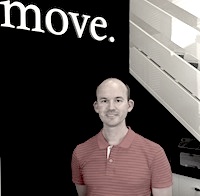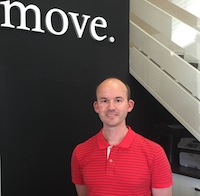Pilates - Are you thinking of getting into the core business!
Pilates - Are you thinking of getting into the core business! By Peter Tziavrangos (APPI Presenter and Physiotherapist)
Although the main reason you should consider becoming a Pilates instructor with APPI is that it is a great adjunct to your clinical skills, and can help so many different patient presentations manage their conditions, have you ever thought about what it might do to your bottom line?
Having worked in the Physiotherapy and Pilates industries as a business owner for over 15 years, I have seen what effect the Pilates trends have had on both the health care and fitness industries. In Australia in the late 90’s there was a wave of excitement and media exposure as Pilates hit our shores from the US via celebrity endorsements, and within the rehabilitation world there was a convenient marriage between research into trunk muscles activity in low back pain and the Pilates Centering principle. The fitness industry jumped on that wave, and cruised through the next few years creating Pilates for the masses, and fusions with other types of exercise such as Yoga and even cardio!
The physiotherapy and rehab world, being more conservative and less commercially savvy, took their time though. Pioneers in the clinical use of Pilates such as APPI’s founders Glen and Elisa, took their time to ensure that the Pilates Method was carefully considered before jumping on board the wave of its popularity. Essential modifications needed to be made, to ensure that Pilates exercises were safe and achievable when considering the pain and pathologies that our patients present with. Importantly though, they were able to maintain the Traditional Principles and values of the Pilates Method and yet still integrate a clinical frame work to take patients from a painful state, all the way through to normal functional levels and indeed go beyond that to surpass pre-injury levels of strength, flexibility and movement control.
A common story for the Physiotherapist using Pilates for home exercises with their patients, is that initially they are a great way to get patients improving movement patterns with home exercises, while treating them in the clinic. The novelty of doing ‘Pilates exercises’ seems to help with the compliance to home exercise prescription! Once you get to the point of discharging patients from treatment though, the issue then becomes compliance with maintenance exercises, and also the quality of movement they are performing tending to reduce over time. A high number of these patients can then re-present with similar problems relating to their posture or poor movement habits, and they often feel this is timed with reducing their regular exercise.
Offering a solution to this problem is simple, with group sessions/classes run at your clinic that allow you to guide a group of patients through the key rehab movements and home exercises. The APPI Pilates Mat Instructor courses provide you with all the skills and information you need to do this. While the patient is attending for treatment, referring them into group sessions allows you to cover their exercise needs in a separate session, allowing you to focus all your 1:1 time on treatment and education. Having a dedicated supervised exercise session also ensures they will be doing the movements well, with appropriate feedback and progressions.
My experience with using Pilates classes to complement treatment has been very positive. Patients have been very receptive to the option of supervised group sessions, and admit their compliance is poor when they don’t come to classes! The APPI framework for progressing exercises through to higher levels of challenge, also gives you options for your patients to move onto classes with harder exercises as they improve. Essentially moving your patients from rehab through to fitness level classes. Once again, the feedback we get from patients is great and often comes back to them feeling safe progressing from rehabilitation to fitness level Pilates exercises under the close eye of a certified Pilates instructor, who is also a University trained health professional.
So we see it working well froma clinical point of view and the patient’s experience, but what effect will it have on your bottom line?
If we consider the typical path a patient will take in the clinic, coming in for some regular treatments over a couple of months for a musculoskeletal complaint, seeing a therapist perhaps once or twice per week. The number of sessions they attend for their treatment will not need to change, just because they are attending Pilates classes. They will still need the same number of treatments, but you can focus more on the treatment rather than exercise prescription in these sessions, as this will be mostly covered by the Pilates course they are attending. In other words, you won’t be replacing treatments with exercise sessions. Having the patient attend for a Pilates course, perhaps one session a week for the 8 weeks they are attending for treatment, will be an additional revenue for your business. Obviously, the more patients you have in a class, the more you will be billing in total for your time running it, but of course numbers need to be capped to ensure you are able to run the class safely and effectively. Keeping numbers slightly lower in beginners level class is useful, as they tend to need more of your attention. Even with classes capped at 5-6 participants and charging each person significantly less than they would pay for individual treatment sessions, the financials stack up nicely for return on investment of your time.
The simple financial sum outlined above is not the only financial benefit though. As you strengthen and develop your relationships with these patients they are more likely to choose to see you for treatment if they have another injury or complaint, and are far more likely to refer a friend for treatment. These two things have been the main drivers for the growth of our physiotherapy practice providing us with both a financial reward, but also a personal one as we get to know our patients better over longer periods of time. I recently celebrated an 11 year anniversary with a group of patients who have been attending mat classes with me on a weekly basis! Of these clients, very few of them have needed treatment over the years, but they all started out as ‘physio patients’.
If you are a clinician who is only used to working 1:1 with patients, and feel intimidated at the thought of running group exercises, The APPI matwork certification will give you the skills to set up and run Pilates courses for beginners, intermediate or advanced levels, and I couldn’t recommend the courses highly enough.
APPI Pilates Presenter
Bachelor Applied Science (Physiotherapy) 1996
APA member
Peter graduated in 1996 and worked at a large teaching hospiatal in Adelaide for three years, in addition to working in Sports Private Practice in that time. He then ventured off to the UK travelling and working for 4 years with his now wife Veronica. It was there that they both become interested in Pilates and did their initial training with APPI in London.
Since returning to Adelaide in 2004 Peter has been working in private practice and teaching pilates studio and matwork full time. With a special interest in back pain and headaches the majority of his clinical work focuses on these two areas, using a biopyschosocial approach to management. Pilates is often a crucial component in the management of these conditions.
Peter and Veronica now own and run Move Physiotherapy and Pilates Studio with two clinics in Adelaide, offering a variety of services to help keep people active.

